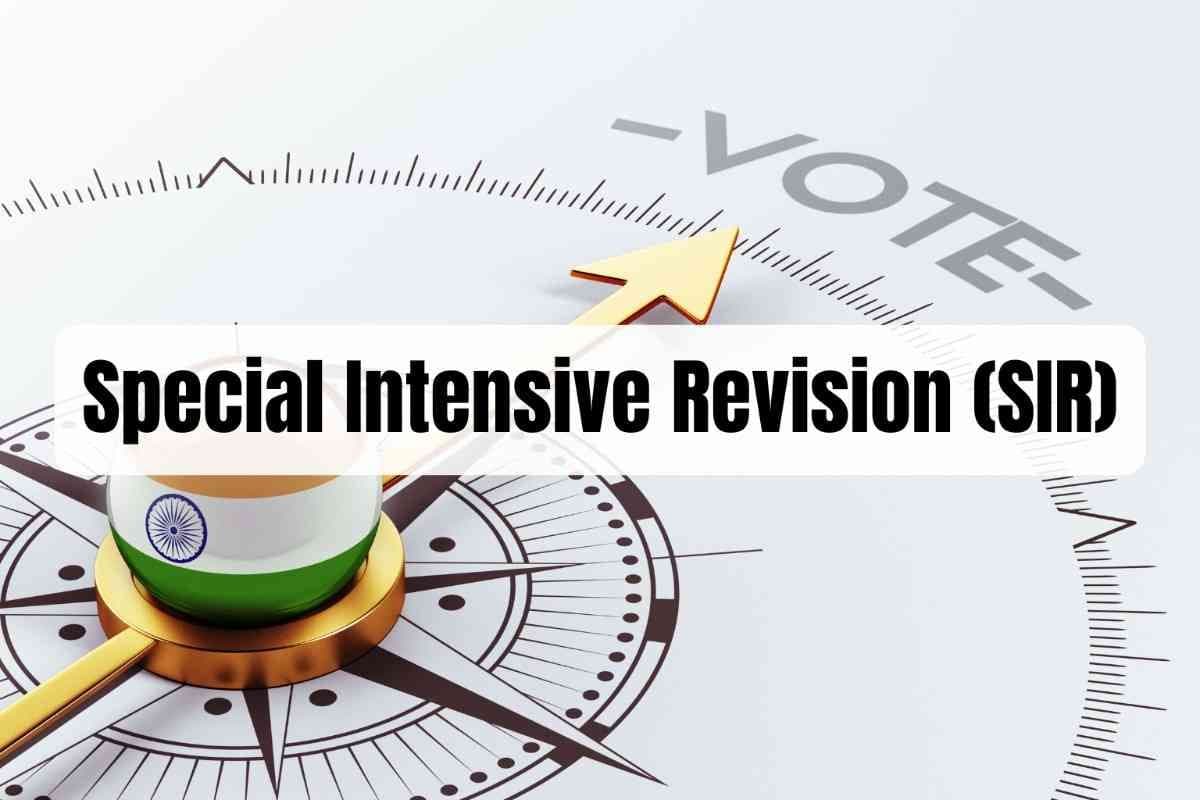India's First Analog Space Mission
Feb, 2025
•10 min read
Why in News?
The 3rd Indian Space Conclave in New Delhi underscored India’s expanding capabilities in space technology. Key discussions revolved around satellite communication (Satcom), the increasing Indo-European Union space partnerships, and the inauguration of India’s first Mars and Moon analog mission (Analog Space Mission) in Ladakh. These developments highlight India’s push toward becoming a global leader in space exploration and technology.
Introduction
India’s space sector is undergoing a remarkable transformation, with increasing attention on both technological advancements and strategic global collaborations. The 3rd Indian Space Conclave was a critical platform for unveiling India’s growing space prowess, focusing particularly on Satellite Communication (Satcom) and partnerships with the European Union.
Simultaneously, the country took a giant leap in space exploration with the launch of India’s first Mars and Moon analog mission in Ladakh, marking a crucial milestone in the pursuit of understanding extraterrestrial habitats.
This mission, a collaborative effort between ISRO and several other institutions, aims to simulate the harsh conditions of space environments, providing invaluable insights for future human space missions. These achievements, alongside India’s other space milestones, reaffirm the country’s ambition to emerge as a leader in space exploration and innovation.
Key Highlights of the 3rd Indian Space Conclave
Satellite Communication (Satcom): Transforming Digital India
- Satcom’s Role: Satellite communication plays a pivotal role in the Digital India initiative, facilitating vital services in sectors such as telecommunications, healthcare, agriculture, education, and disaster management.
- Satcom Reform 2022: The introduction of the SatCom Reform 2022 policy has been instrumental in enhancing innovation and fostering public-private partnerships within the space technology sector. This reform is pivotal in accelerating satellite communications, streamlining processes, and making space more accessible for private players.
- Bridging Connectivity Gaps: Through satellite communication, India is bridging the digital divide, ensuring that even the most remote regions benefit from connectivity and digital services. This will prove crucial for the realization of the Digital India initiative.
India’s Emergence as a Global Space Leader
- Chandrayaan-3 and Gaganyaan: India’s recent successes, particularly with missions like Chandrayaan-3, and the upcoming Gaganyaan human spaceflight mission, are crucial markers of India’s ascension as a space leader. These missions not only contribute to scientific discovery but also position India as an emerging global player in space exploration.
- Global Collaborations: India is building a robust space network designed to complement existing terrestrial infrastructure, which will enhance its ability to collaborate with international space agencies and contribute to the global space economy.
Indo-European Union Space Collaboration
- Strengthening Ties: The European Union has acknowledged India as a growing space power, recognizing shared goals in space exploration. The EU’s Proba-3 satellite launch will further solidify Indo-European Union cooperation in space technology.
- Proposed Initiatives: Joint ventures in areas such as Earth observation, space security, and astronaut training are being actively discussed, reflecting India’s growing influence in shaping space governance at the global level.
Rise of Space Startups in India
- Startup Ecosystem: Since the implementation of the 2020 space sector reforms, India has seen the emergence of over 300 space-focused startups. These startups are not only contributing to economic growth but also bringing in innovative ideas and technologies.
- Reversing Brain Drain: India’s space reforms have attracted Indian talent back from renowned global space agencies like NASA, helping to reverse the brain drain and further bolstering the country’s space capabilities.
Ambitions of India’s Space Program
- Long-Term Goals: India has outlined ambitious space objectives, including the successful execution of Gaganyaan (a crewed space mission), a planned lunar landing by 2040, and the establishment of an Indian space station by 2035.
- Space Tourism by 2040: Looking to the future, India is also aiming to tap into the burgeoning field of space tourism, with plans for commercial space tourism by 2040.

India’s First Mars and Moon Analog Mission (Analog Space Mission)

Understanding Analog Missions
An Analog Space Mission is designed to simulate the challenges and conditions that astronauts would face in deep space. These missions are vital for testing the sustainability of human life in extraterrestrial habitats and for overcoming operational challenges that might arise during real missions.
Key Features of India’s Analog Mission
- Collaboration: India’s first Mars and Moon analog mission is a collaborative effort led by ISRO, alongside AAKA Space Studio, the University of Ladakh, and the Ladakh Autonomous Hill Development Council. This mission aims to address critical challenges in human space exploration by simulating conditions that astronauts would face on Mars and the Moon.
- Objective: The primary objective of this Analog Space Mission is to test various technologies for sustainable extraterrestrial bases, focusing on life support systems and psychological adaptation of astronauts in isolated conditions.
Ladakh: A Natural Testing Ground
- Why Ladakh?: Ladakh’s unique geographical features make it an ideal location for simulating extraterrestrial conditions. The high altitude, extreme temperatures, and thin oxygen levels replicate conditions found on the Moon and Mars.
- Simulating Lunar and Martian Terrain: The rocky, sandy soil of Ladakh mirrors Martian regolith, making it an excellent location for testing rover mobility and resource utilization technologies.
Technological Innovations Being Tested
- Circadian Lighting: One of the key innovations being tested is circadian lighting, which is designed to maintain astronauts' sleep cycles during long space missions.
- Hydroponics: Another significant innovation is hydroponics, which allows sustainable food growth, ensuring that astronauts have a constant and reliable food supply during missions.
- Standalone Solar Power System: A renewable energy solution, such as the standalone solar power system being tested, ensures that space habitats remain energy-independent.
Significance of Analog Missions
Analog missions like India’s first Mars and Moon analog mission are essential for preparing astronauts for future exploration missions to the Moon, Mars, and beyond. They simulate real operational challenges, allowing scientists to study physical, mental, and technological aspects of long-duration space missions. These missions not only support the practical aspects of space exploration but also contribute valuable insights into human adaptability and sustainability in space environments.

Space Sector Reforms: 2020 and Beyond
Space Sector Reforms 2020
- IN-SPACe: The establishment of the Indian National Space Promotion and Authorization Center (IN-SPACe) was a significant step in opening up the Indian space sector to private participation. It plays a vital role in fostering innovation and helping capture a larger share of the global space economy.
- NSIL’s Role: New Space India Limited (NSIL) has also been instrumental in boosting commercial space operations, enabling Indian industries to engage in high-tech space-related activities.
SatCom Reforms 2022
- The SatCom Reform 2022 streamlined the satellite communication application process, reducing approval times from 6-8 months to 6 weeks, significantly boosting innovation in the space sector.
- These reforms have also lowered costs, encouraging private players to actively participate in the space communication industry, further enhancing India’s position as a global space power.


Global Analog Missions: Learning from Others
Desert Research and Technology Studies (Desert RATS)
Conducted by NASA in Arizona, Desert RATS tests mission rovers and extravehicular activities in harsh desert environments, simulating conditions on the Moon and Mars.
NASA Extreme Environment Mission Operations (NEEMO)
NASA’s NEEMO program operates undersea missions in the world’s only underwater research station to simulate long-duration space missions.
Hawai‘i Space Exploration Analog and Simulation (HI-SEAS)
Operated by the International MoonBase Alliance, HI-SEAS is an analog space research station that studies human adaptation to the Martian and lunar environments.
Conclusion
India’s growing presence in the space sector is marked by groundbreaking missions such as the first Mars and Moon analog mission and the ongoing 3rd Indian Space Conclave. These developments highlight India’s determination to take a leading role in space exploration, from technological innovation to fostering international partnerships. By embracing space reforms, nurturing space startups, and prioritizing research in analog space missions, India is on its way to becoming a global space leader, paving the way for a future defined by exploration, sustainability, and innovation.
Frequently Asked Questions (FAQs)
Mains PYQs
- Launched on 25th December, 2021, James Webb Space Telescope has been much in the news since then. What are its unique features which make it superior to its predecessor Space Telescopes? What are the key goals of this mission? What potential benefits does it hold for the human race? (2022/15M).
- India has achieved remarkable successes in unmanned space missions including the Chandrayaan and Mars Orbitter Mission, but has not ventured into manned space mission, both in terms of technology and logistics? Explain critically (2017/10M).
Prelims PYQs
Consider the following statements: (2016)
The Mangalyaan launched by ISRO
- Is also called the Mars Orbiter Mission
- Made India the second country to have a spacecraft orbit the Mars after USA
- Made India the only country to be successful in making its spacecraft orbit the Mars in its very first attempt
Which of the statements given above is/are correct?
A. 1 only
B. 2 and 3 only
C. 1 and 3 only
D. 1, 2 and 3

Related Blogs

Special Intensive Revision (SIR) of Electoral Rolls: Definition, Objectives, Significance, & Challenges
Dec, 2025
•4 min read

UNICEF Day 2025: 79 Years of Global Commitment to Child Rights & Protection
Dec, 2025
•4 min read

Vande Mataram: The National Song of India UPSC | Recent Debate in the Parliament
Dec, 2025
•6 min read
